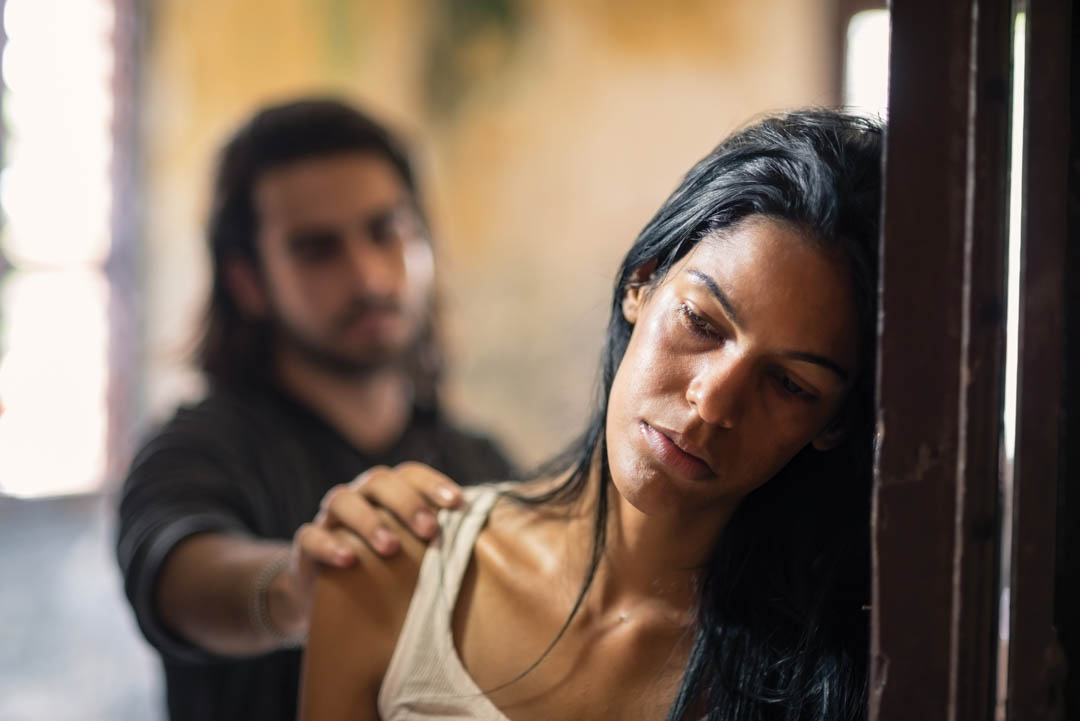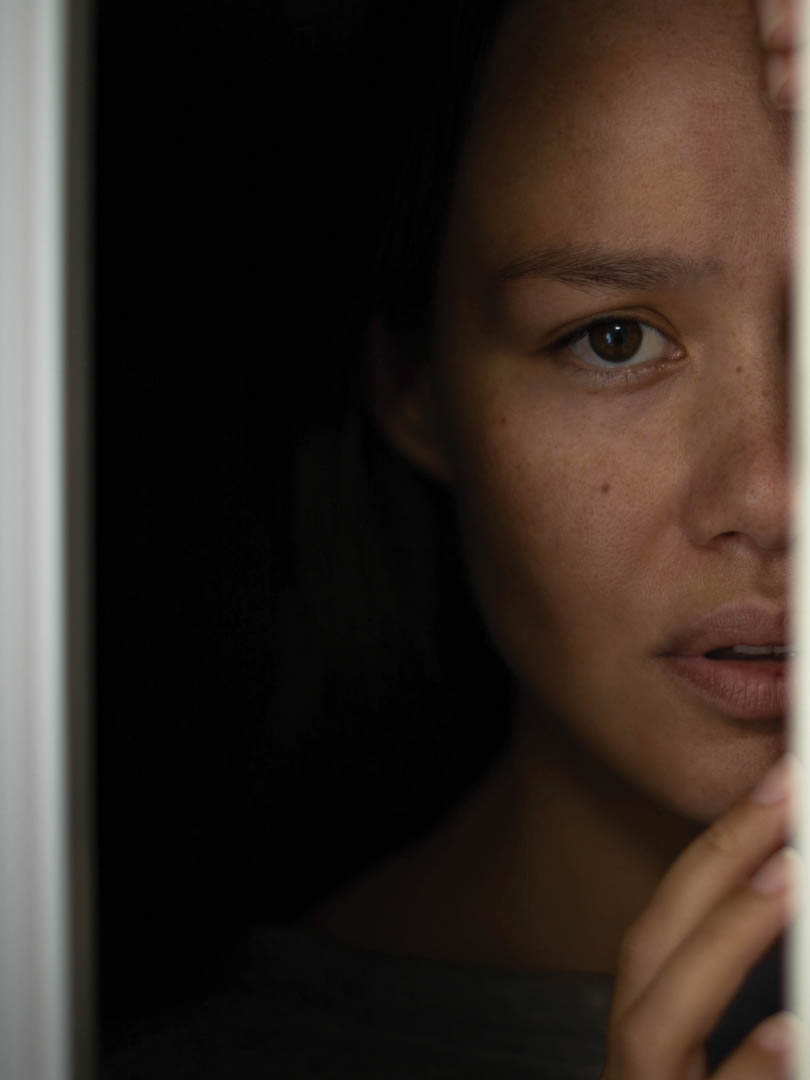Understanding the white ribbon
November 1, 2021

White Ribbon Day on November 19 is a chance for many around the world to “stand up, speak out”, raise awareness surrounding women‘s experiences with male violence and #endthecycle of domestic abuse. The goal of the White Ribbon Campaign (and the White Ribbon Foundation) is to end violence and abuse and achieve gender equality, with a strong focus on men‘s violence against women and girls. However, domestic violence (DV) is too often narrowly defined as only physical assault. Abuse is actually a systemic pattern of behaviours.
I’ve developed a systems of abuse and patterns of behaviour chart that breaks down 13 areas:
• Child Abuse: There’s been a lot of news coverage over the past five or six years in Australia on uncovering systemic abuse of children. When we see these reports we often think of child sexual abuse, but it’s not just in those specific hotspot areas. It’s much harder to recover from a childhood of being told that you were worth nothing and that you were unwanted than it is to recover from a broken bone. Child maltreatment and child neglect also fall into this category
• Cultural abuse: Abuse that is perpetrated through culture can show up either in family culture or socio-ethnic culture where it’s justified as, “where I’m from, this is how we do it. You need to get in line”.
• Emotional abuse: We see the effects of emotional abuse in what we call ACEs (adverse childhood experiences). The more counts of ACE that an adult has is linked to negative mental health. Depression, higher rates of potential suicide and higher rates of auto-immune disease often come as a result.
• Intellectual, psychological and social abuse: This is considered physical abuse of the brain tissue because when someone lives in an emotionally, psychologically terrorist type of environment, they end up physically sicker.
• Financial abuse: Is present in almost every family violence situation where women do not have full and equal access and decision-making power with the family finances. Additionally it can include women who don’t know that their husband is racking up debt in their name, has taken out a second mortgage on the house or has quit their job or has a gambling addiction.
• Animal Abuse: One of the most effective ways to force someone to do what you want is to threaten their pets. If I believe you’re going to hurt my dog or my cat—even if I previously wouldn’t do what you want—I’ll do anything if I love that animal.
• Destruction of property: Things like refusing to maintain a spouse’s vehicle so the spouse can never leave to get medical care. It can also include situations were she can’t escape, especially out in the bush, because she has no access to a functioning vehicle, or she’s never been allowed to get a driver’s licence. And obviously it also includes smashing things.
• Physical Abuse: This form of abuse can take many forms, some of which are less obvious than the obvious shows of physical force or physical violence. Alongside hitting can also be slapping, biting, blocking from exiting a doorway and driving with road rage—endangering someone’s life because of your driving.
• Sexual abuse: We think of rape and violent assault as sexual violence or abuse, but if we define rape as the absence of consent: what about the wife who is raped in her sleep throughout her marriage? What about the young woman who is under the age of consent but is told to believe a mature man really loves her. She’s coerced and manipulated into what she believes is consent when legally she can’t give consent. The partner coerced into performing sexual acts they are uncomfortable with or reluctantly engages in sexual activity due to persistent pressure from their significant other. The spouse who has an out-of-control pornography addiction—and maybe is even acting that out in real life—but the wife has no idea so she can’t consent. She’s not given the opportunity to say no because she’s deceived.
• Social abuse: If someone is isolated or triangulated, they’re pulled away from their family. They might be taken far away physically or they’re told that everyone else is out to get them. This manifests in a fostered sense of paranoia or that “it’s only you and me, baby against the world. No-one else understands you like I do”. Or “when I’m acting crazy and violent, no-one can calm me down like you can”.
• Spiritual abuse: Any of these things done in the name of God is spiritual abuse.
• Verbal abuse: Swearing, shouting or speaking unkind words constantly.

Djedzura—Getty Images
The core issue that unites all these forms of abuse, however, is the abuse of power. How do we use our power: to exploit or protect?
The scars of being emotionally cut down and psychologically or intellectually belittled, demeaned and disassembled piece by piece as you lose your personhood, your autonomy and your humanness—those scars last much longer than a bruise that heals and then goes away.
Defining these types of abuse is the first step to addressing domestic violence because until you can name it, you can’t do anything about it.
Not just women
If you’re reading this saying “Oh, but not only women are victims of abuse. Women will be abusers too”, you’re right. However, statistics show the overwhelming majority of reports surrounding this type of violence have female victims.
I’ve spoken to men who have experienced horrific aspects of abuse right off the list above, whether it was in their marriage, workplace or in their faith system.
Very often people jump straight to the assumption that if you were pushing back against abuse that you are anti-male. That could not be further from the truth. We conflate toxic, abusive behaviour with the traits of “manliness”, and that is unfair to men.
If we equate being the loudest guy in the room or the most forceful with being the most manly, then we are inadvertently equating abuse with masculinity. These cultural expectations are very much drawn from pornography, Hollywood and “John Wayne wild west” kind of culture—it’s pervasive, and at its worst it can end up encouraging gender based violence—where violence against somebody of the opposite gender is viewed as masculine.
I believe the standard of godly masculinity is the fruit of the spirit: Love, joy, peace, patience, kindness, goodness, gentleness, faithfulness and self-control (see Galatians 5 in the Bible). And I happen to believe that is the standard for godly womanliness as well.
Men and women should meet together in mutual respect and cultivate these values. Acceptance of abuse is just as toxic to men. Men have the ability to be self-controlled, gentle, kind and loving. We should not just assume men are emotionally stunted and needing their wives to be their mummies. That’s insulting to good men.

Diego_Cervo—Getty Images
How can we help?
It’s incredibly common for victims of either gender to not know they’re living with abuse. I’ve spoken to women who’ve been victims of sexual assault or brutally raped by their intimate partners in their marriages for years and just thought that was what sex was supposed to be like. They thought their job as a wife was to meet all their husband’s proclivities, which may have been coming straight from violent porn.
Those who don’t have a reference point for what love and honour is don’t know that what they’re experiencing is wrong. If you or someone around you has awakened to this and does express it to you, they’ll say something like “It’s really rough again. I thought it was going to be better this time. He promised it wouldn’t go back to this.”
You’ll never hear the full story first because the victim has not fully come to terms with the magnitude of what they are experiencing. They may feel foggy or confused all the time—like they’re on a rollercoaster.
If you hear something you recognise as a red flag, begin watching and observing. Listen, don’t condemn. Don’t force them to leave. Don’t jump in as an advocate or an activist saying, oh, you’ve got to get out of there, go right now. You can get people killed. You don’t know how dangerous an abusive or controlling spouse may be. If the victim has never removed compliance before and then they decide to break ties or truly seek help, you don’t know how volatile the abuser will be.
If someone over the age of 18 is trying to disclose abuse—listen, care and validate. Say things like: “That sounds really difficult. Sorry you’re going through this. It sounds like there may be more going on. Have you talked to a counsellor? Have you considered speaking to someone in family violence who might be able to help you get more tools to understand what is happening?”
If the victim or the suspected vulnerable person is under the age of 18—report it to the authorities, period. Don’t make it anyone else’s business.

Globalmoments—Getty Images
Remember, 93 to 97 per cent of abuse reports are true, the same as other crime reports. During the pandemic, while other crimes decreased in Australia, DV increased by 13 per cent.
When someone is first recognising the signs of DV, they will be terrified to tell someone; terrified to break family confidentiality; terrified of repercussions and terrified in a faith community that they’re letting down their vows, family, their image, the church’s image or the image of God.
Give them tidbits for the next right step—a resource, a number to call, somewhere they can get more info.
If someone comes to you and they are ready to get out, you need to refer them to your nearest family violence facility.
Get an advocate involved. If they are in a faith community, get them involved with an advocate who is outside of the faith community so that they have some chance of safety without everyone deciding to get involved.
If you have experienced domestic violence, I want you to know there is a tremendous amount of hope for freedom. There is a whole tribe of survivor warriors who are there waiting for you to join them, to have your back and support your journey out of the wilderness. Don’t lose hope just because it feels hopeless.
If you or someone you know is dealing abuse or domestic violence in any of its forms, there is help. Call 1800-737-732 (1800RESPECT) or visit one of these websites for more support.
Sarah McDugal is the author of multiple books, a speaker, trainer and abuse recovery coach who works with women and faith communities. Sarah lived in an abusive marriage, while in public she was a clergy wife. She also experienced child sexual abuse from a prominent church leader. It wasn’t until she was an adult that she was able to truly process and recognise the process for what it was.
If you’d like to learn more, you can visit Sarah’s website here.









